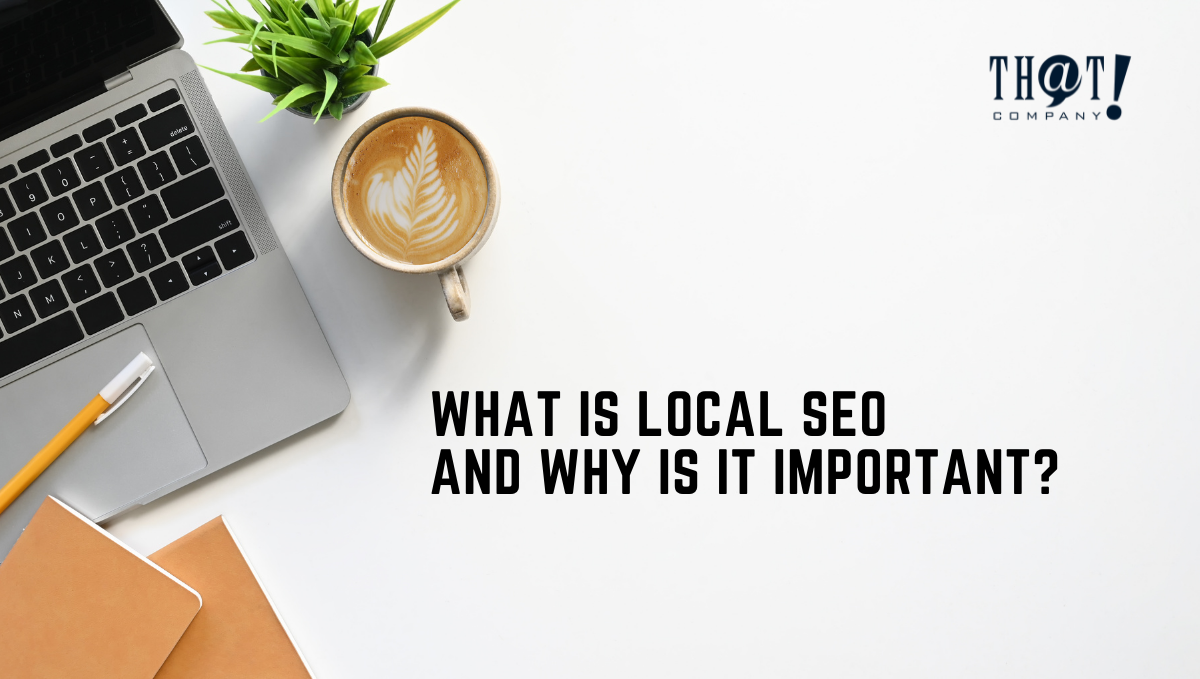
Local SEO is a subfield of SEO/marketing that focuses on localized search. That means ranking your business higher on search results on sites like Google and Bing for anything related to your location. Think of it this way: if you rank higher in Google for the exact keywords that people in your area search every day, chances are that you’ll get more visits from those people and increase your overall traffic. More visitors = more business.
Here’s how it works: there are specific keywords and phrases that people in your location use when searching for businesses like yours online. If you rank higher for those specific keywords, then your business can be found by more of the people in your community who are looking to hire you. This is called “local search traffic.” These are people who are looking for you specifically rather than being on a broad search looking for something they don’t know about yet, and landing on your website as a result.
Long-Tail Keywords for Local SEO
 The thing about local search traffic is that if you get it, then you don’t have to spend as much money on getting new customers. You’ll already be ranking higher for the keywords they use to search for businesses like yours. The ones you’ll want to rank higher for are called “long-tail keywords.” Long-tail keywords are exactly what they sound like: phrases that have a lot more words than compared to the standard keyword query.
The thing about local search traffic is that if you get it, then you don’t have to spend as much money on getting new customers. You’ll already be ranking higher for the keywords they use to search for businesses like yours. The ones you’ll want to rank higher for are called “long-tail keywords.” Long-tail keywords are exactly what they sound like: phrases that have a lot more words than compared to the standard keyword query.
For example, if someone asks Siri or Google, “How do I make Easter cookies?” then that’s not a long tail keyword because there is only one word in the query: “cookies. However, if they asked for “How do I make Easter chocolate chip cookies that are gluten-free, vegan, and paleo?” then that’s a long-tail keyword. It has all the words you would need to rank for that search query: “chocolate chip, gluten-free, vegan, and paleo.”
Long-tail keywords are typically searched by people in your location who are looking for something very specific. It’s much easier to rank for them than it is to rank for the simple keywords everyone else is trying to use to find what they need online. Long-tail keywords are easy to rank for because there aren’t as many people competing with you directly on those phrases.
The number of people searching on Google for everything related to their location is only going to increase, from casual searches like “best sushi rolls in town” to very specific searches like “plumbing contractors in Palo Alto.” So if you want to stay ahead of the local search game for your business or organization, then you need to think of long-tail keywords.
[bctt tweet=” There’s no need to send them to a website or fill out an inquiry form. Your job is to keep up with the latest information about your GMB listing and ensure that people can find you easily from GMB.” username=”ThatCompanycom”]Local SEO on Google My Business
 This is the easiest way to get more attention from Google. It allows you to create a free business listing on Google My Business (GMB) for your location (which, at a minimum, will include your address). The best part about this is that you can update the information on your website and keep it updated with any changes. Then, when people search for businesses in your area that have a GMB listing, they’ll be directed to your business listing, which will bring them back to your website and help them decide if you’re the right choice for them locally.
This is the easiest way to get more attention from Google. It allows you to create a free business listing on Google My Business (GMB) for your location (which, at a minimum, will include your address). The best part about this is that you can update the information on your website and keep it updated with any changes. Then, when people search for businesses in your area that have a GMB listing, they’ll be directed to your business listing, which will bring them back to your website and help them decide if you’re the right choice for them locally.
GMB uses the same exact algorithms that search engine algorithms use. It rewards businesses for their professionalism and search-friendliness the exact same way other businesses are rewarded for being established with a lot of good reviews. If you do all of the basics correctly with your GMB listing, then you’ll see more traffic from people who are searching locally and more business from the long-tail keywords they’re searching for.
Google My Business is also a great place to funnel new business if you already have clients for your services. If someone in your area needs something or is looking for a new service, they’ll see your listing on Google and can contact you directly from there. There’s no need to send them to a website or fill out an inquiry form. Your job is to keep up with the latest information about your GMB listing and ensure that people can find you easily from GMB. Local SEO on GMB also means having all of your other local social media profiles properly linked to your business listing. If you have a Facebook page, Instagram account, Twitter profile, and LinkedIn page, then you should make sure that they are linked to your GMB listing.
One thing that is essential to local SEO is a Google Map listing. Google Maps is one of the most powerful local SEO tools. It allows people to see exactly where you’re located and it gives your business a physical presence on the internet for everyone to see. The best thing about Google Maps is that it gives you a chance to include additional information like directions, business hours, parking, and nearby points of interest. People searching for businesses in your area will appreciate having this kind of information right on your GMB listing. It helps them decide whether or not they want to contact you directly for more details or keep looking until they find something that satisfies their needs better.
Local SEO for Local Businesses
 Local SEO is an important aspect of your website’s success. It will help you get more customers from your immediate area. It increases your social media presence, attracts new people to your website to discover more about you, and tends to bring in a lot of new potential customers from Google Maps. For that reason, its importance to local businesses like yours can’t be understated—especially when it comes to the local search rankings.
Local SEO is an important aspect of your website’s success. It will help you get more customers from your immediate area. It increases your social media presence, attracts new people to your website to discover more about you, and tends to bring in a lot of new potential customers from Google Maps. For that reason, its importance to local businesses like yours can’t be understated—especially when it comes to the local search rankings.
There are lots of different things that go into local search SEO, including things like building links that are relevant for your area and improving the quality of the content on your website. There is no one-size-fits-all solution to local SEO, but it can be an effective way to get more customers from your immediate area.
The end goal is simple: the more people you have coming to your website from local search (primarily through organic search results), the more business you’ll be doing. So think about that next time you’re shopping online, picking up your kids from school, or even driving home and looking for a place to eat dinner that’s closer than the one you usually go to—chances are, someone in your local area is doing all of those things right now. And, chances are they’re going to find their way back to your website because of it.
Summary
Local SEO offers you two ways to build your brand and business. The first is sending traffic to your website so they can interact with you there. The second is visiting your business listing, which is found on Google search or Google Maps. With two ways to gain interaction from people looking for what you have to offer, local SEO is very important. Make sure that you are utilizing all the benefits of local SEO otherwise you’ll be losing potential customers to your local competitors.


























 Talk With Us
Talk With Us  Give Some Love
Give Some Love 


